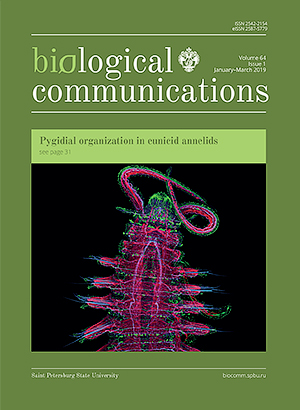Soil physical and chemical properties changes after zinc contamination
DOI:
https://doi.org/10.21638/spbu03.2019.106Abstract
The aim of this work was to study the effect of a high rate of Zn on the chemical bond forms of metal in soil and on the physical properties and organic matter of Haplic Chernozem under model experiment conditions. The metal sequential extraction procedure used in this study was the classical five-step method proposed by Tessier et al. (1979). The particle size distribution was determined by the pipette method (using the pyrophosphate procedure of soil preparation) (GOST 12536-79). The microaggregate distribution was determined in the same way as the particle size distribution analysis above, except that there was no chemical dispersant (sodium pyrophosphate) applied (only mechanical agitation with water) (GOST 12536-79; Vadyunina and Korchagina, 1973). The qualitative composition of organic matter was determined using the Tyurin procedure modified by Ponomareva and Plotnikova (Vorob’eva, 2006). Contamination of Haplic Chernozem with Zn acetates at high rates of 2000 mg/kg affected the physical and chemical properties of the soil. A significant increase in the first two soil fractions least strongly bound to the soil was observed in contaminated soils. Silicates and Fe-Mn oxides made the largest contribution to the Zn adsorption and retention. The content of organo-mineral particles in colloidal size increased, which resulted in an increase of the clay fraction content up to 4.5 % compared to the control. The qualitative composition of organic matter changed: the contents of free and sesquioxide-bound humic acids and free fulvic acids increased. Studies of soil physical properties and organic matter quality changes and chemical bond forms of Zn in soil are needed to better understand metal behaviors in the environment and implement repair strategies in different polluted soils.
Keywords:
zinc, soil, fractional composition, organic matter, particle size distribution, structural status, aggregate content
Downloads
References
Downloads
Published
How to Cite
Issue
Section
License
Articles of Biological Communications are open access distributed under the terms of the License Agreement with Saint Petersburg State University, which permits to the authors unrestricted distribution and self-archiving free of charge.





